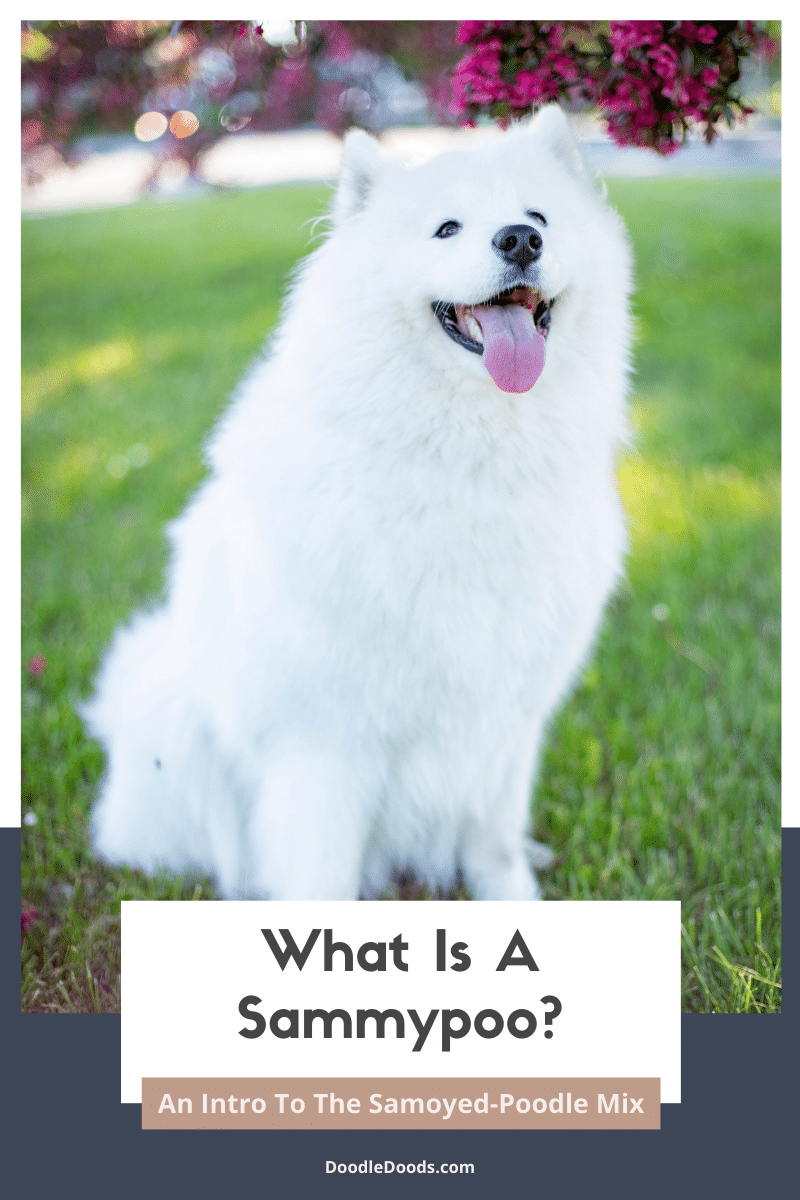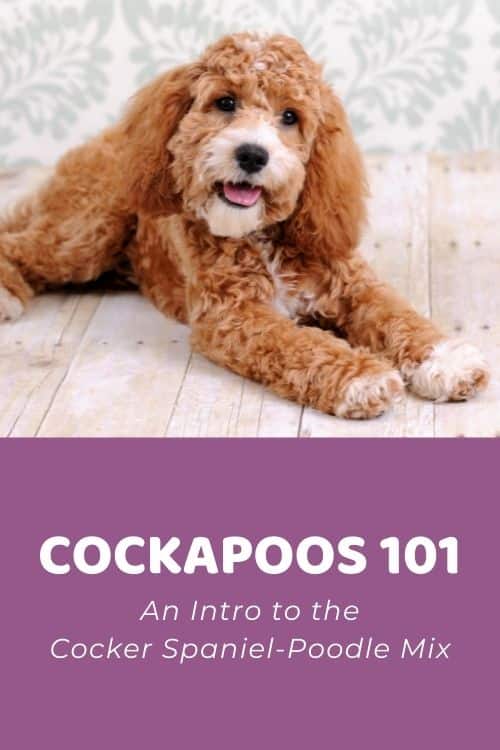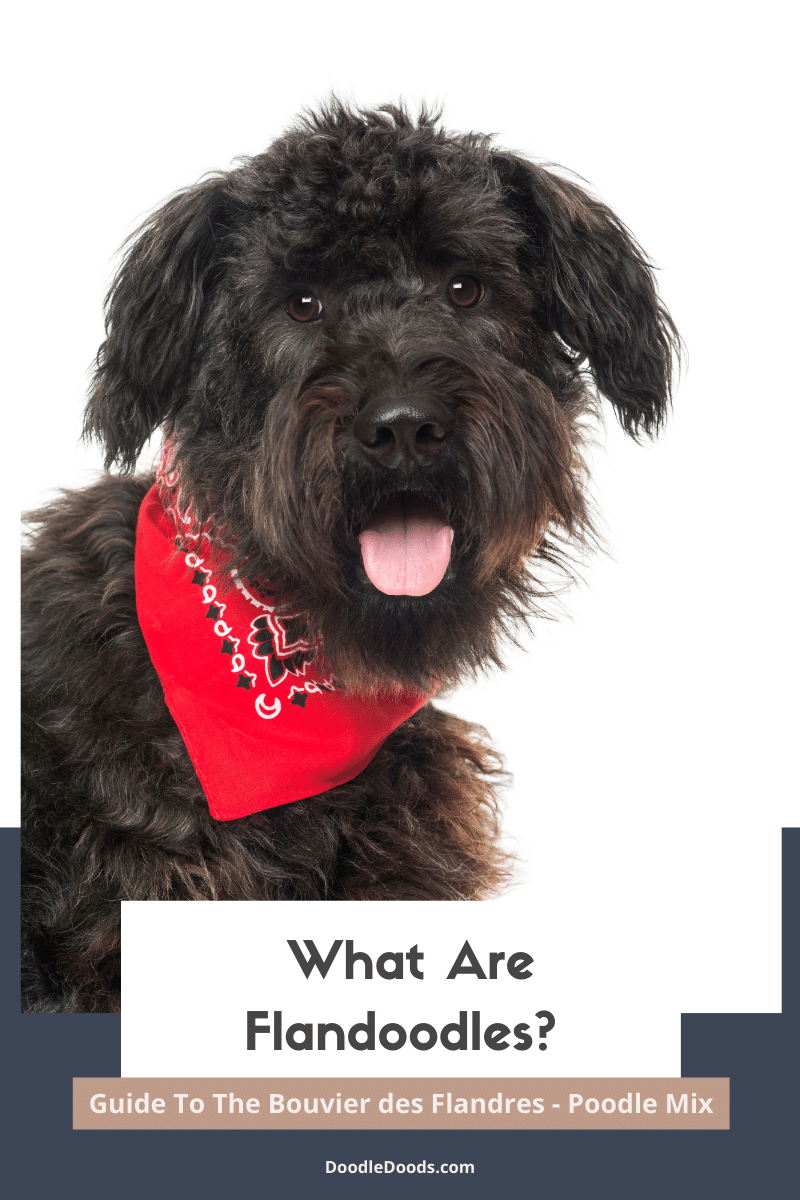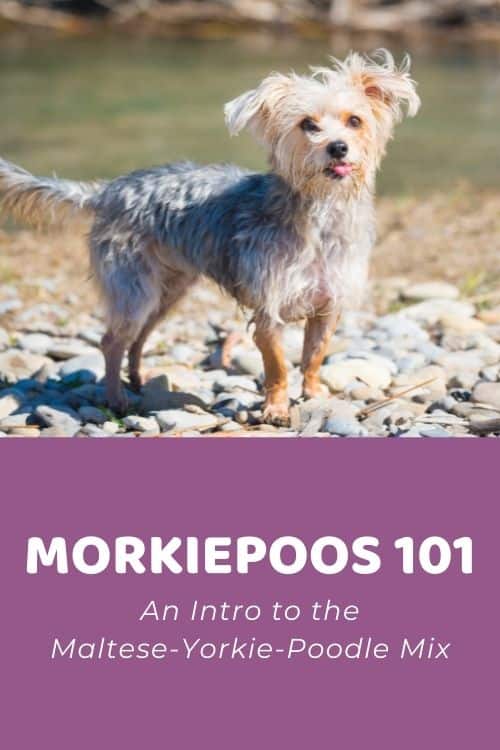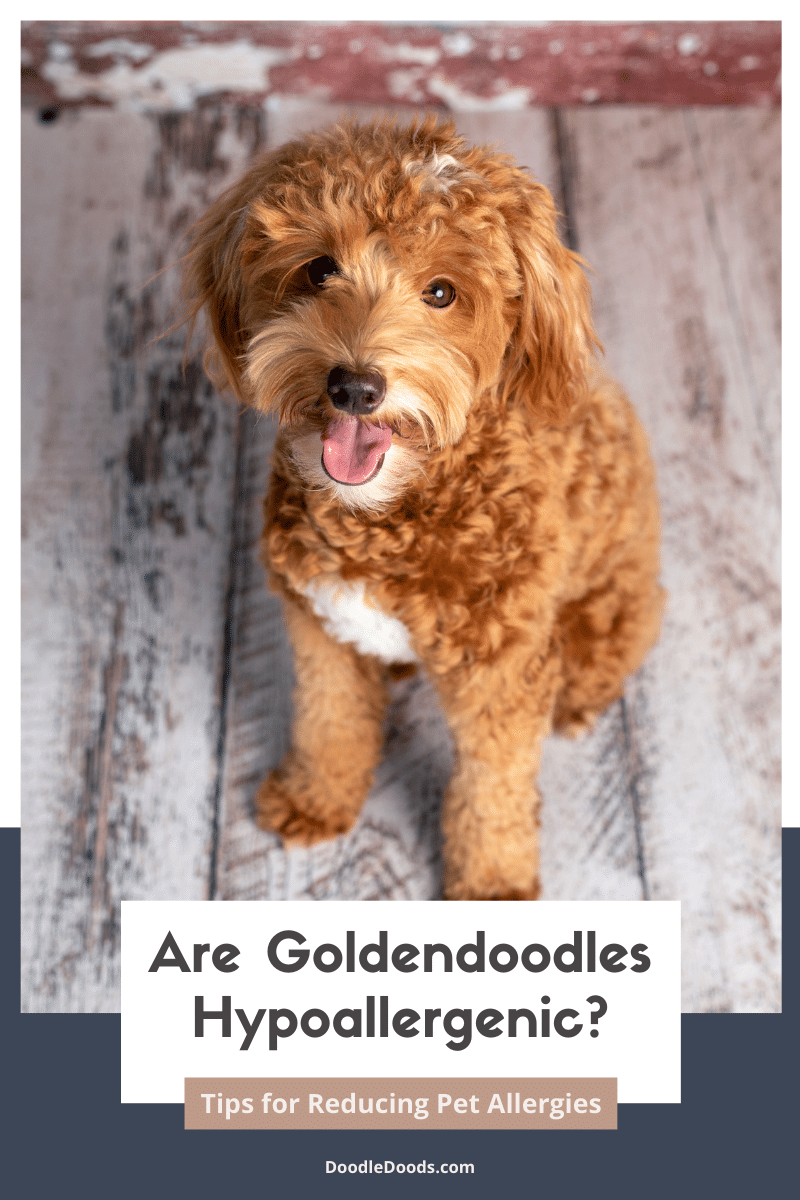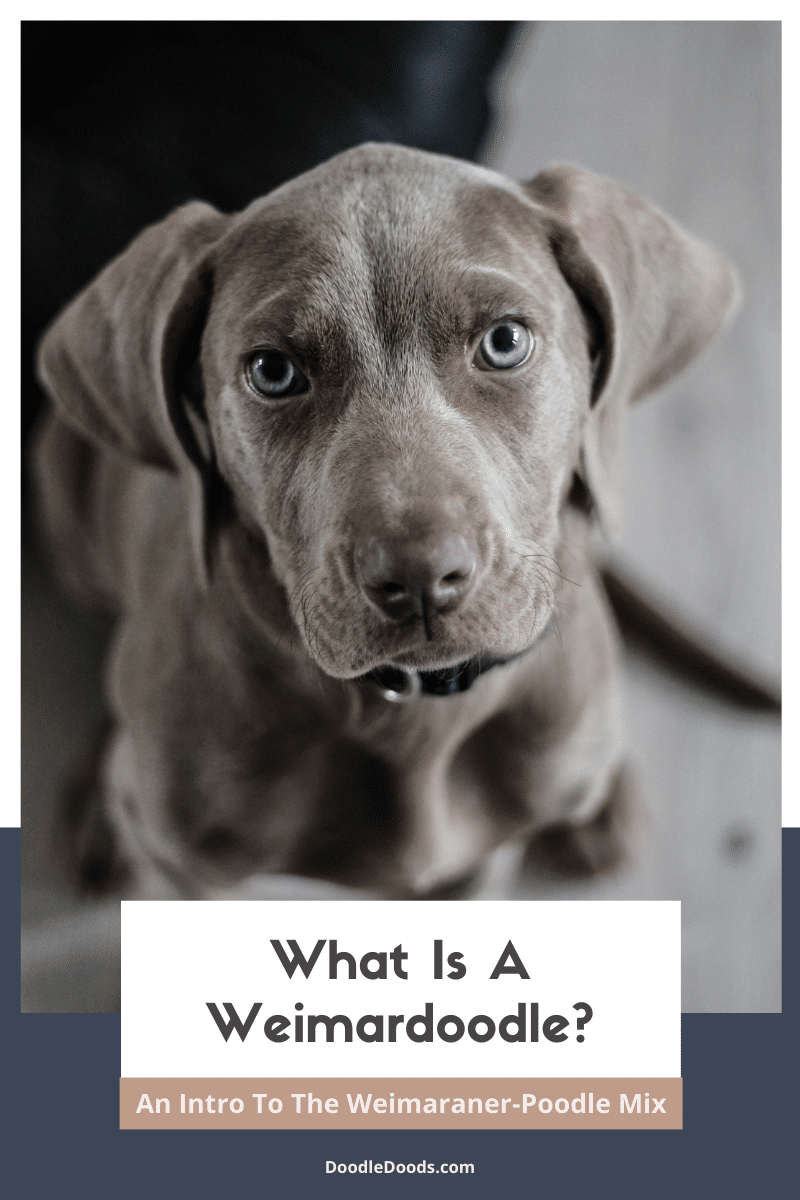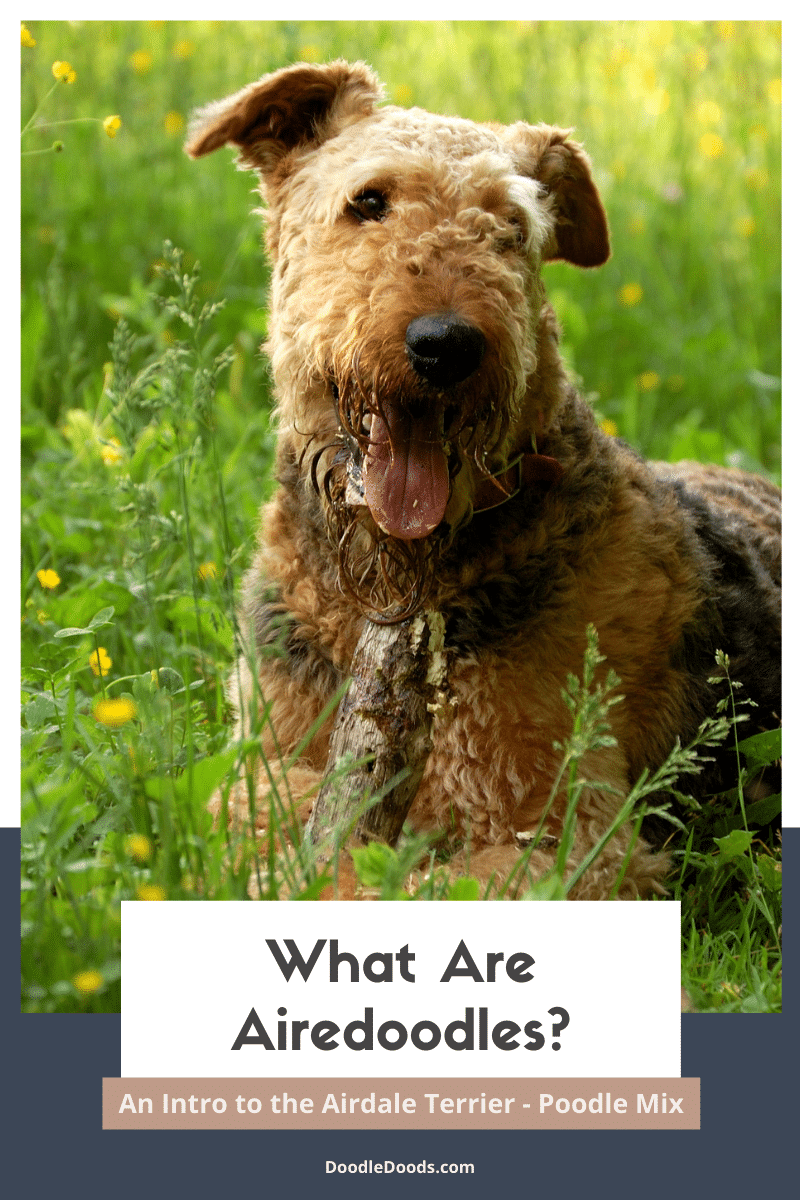We all love Poodles and Samoyeds, but what happens when we mix these two wonderful purebreds? The adorable Sammypoo! In this guide, we’re going to discuss everything about the Samoyed-Poodle mix. Whether you’re thinking about adopting this gorgeous Doodle pup or just would like to learn more about the Sammypoo, then buckle in and let’s get to it!
Table of Contents
- What Is A Sammypoo?
- Sammypoo Physical Appearance
- Sammypoo Pictures (Puppy & Adult)
- Sammypoo Size: How Big Will A Sammypoo Get?
- Sammypoo Variations & Generations
- Personality & Temperament
- Sammypoo Health: Do Sammypoos Have Health Problems?
- Sammypoo Lifespan: How Long Do Sammypoos Live?
- Exercise Requirements
- Training A Sammypoo
- Sammypoo Coat Care & Grooming
- Where Can You Get Sammypoo Puppies?
- Sammypoo: FAQ
What Is A Sammypoo?
The Sammypoo is a hybrid cross made up of the Samoyed and Poodle breeds. Fiercely loyal, super friendly and gentle, yet wildly playful companions as they are, Sammypoos combine the best traits of both of their purebred parents.
The purebred Samoyed sure is a looker with its bright white, fluffy coat. The only downside is that Samoyeds are also moderate heavy shedders, which means that many people aren’t able to adopt these pooches to their families. If you’re one of those people, you’ll be glad to learn that by adding the Poodle into the mix, you’ll get all the amazing traits of the Samoyed, paired with the Poodle’s hypoallergenic qualities. And, of course, a Sammypoo will also have that intelligence and cheekiness of its Poodle parent.
It’s not exactly known when the Samoyed-Poodle mix came to be exactly, but it’s safe to assume that they emerged sometime in the last two or three decades when Poodle mixes started to become more popular.
In contrast, both Poodles and Samoyeds have both been around for a very long time. While Poodles were initially bred as waterfowl hunting dogs in Germany, Samoyeds originate from northwestern Siberia where they were bred as herding and hunting dogs. Interestingly enough, Samoyeds weren’t just working for humans, they’ve always been considered as much beloved pets to their nomadic owners.
Fun fact: The first Samoyed was registered with the AKC in 1906 and the first Poodle in 1887.
Sammypoo Physical Appearance
Sammypoos are usually medium to large-sized dogs with an athletic build that’s covered in thick layers of fluffy fur, ranging from curly to wavy to straight in appearance. They often sport that similar Sammy smile of a Sammypoo and inherit their floppy ears from the Poodle parent.
Sammypoo Colors
Although Sammypoos may very well inherit the lighter white, cream, or biscuit colored coats from their Samoyed parents, they may also take after the Poodle with darker colored coats or beautiful patterns. Some Sammypoos may also have gray, silver, blue, brown, black, or even red coats. It’s also not uncommon for them to sport the piebald coat, where the majority of their coat is white, but has markings or spots of another color on the head and neck.
Coat, Shedding, & Hypoallergenic Level
Sammypoos have very thick and fluffy coats that are bred to be low to non-shedding and allergy-friendly. Keeping in mind that the purebred Samoyed is a double-coated breed that sheds a fair amount of hair, some Sammypoos may also come with a lightly shedding undercoat. However, the Poodle genes will help minimize this issue and that’s what breeders tend to strive for, too. Of course, this depends on which genes are more dominant in a Sammypoo.
The Poodle is widely praised as a hypoallergenic purebred thanks to its thick and textured curls. And it’s no surprise that in the 1950s breeders started to mix the Poodle with other breeds so that their Doodle offspring would also benefit from the hypoallergenic Poodle genes.
The Samoyed, on the other hand, has every bit as fluffy and thick coat as the Poodle. Obviously, the straight-haired Samoyed has a vastly different hair texture and it also comes with an insulating undercoat.
Naturally, as the Samoyed-Poodle mix is a crossbreed, these pups may end up either way. Or, fall somewhere in between. Curly-haired Sammypoos usually have just one single layer of fur and they’re the most hypoallergenic of the bunch. This means that they won’t shed much hair. Therefore, they’re most suited for people with dog allergies. The downside is that they’re also the most prone to matting.
On the other end of the spectrum we have the straight and fluffy coat that resembles more of the Samoyed’s coat. Similarly to purebred Samoyeds, these Doods tend to inherit a shedding undercoat, albeit often shedding less than the Samoyed.
Most common coat type in Sammypoos is likely the wavy coat. The hair has a noticeable wave to it and there may or may not be a lightly shedding undercoat. The wavy coat is often regarded as the least high-maintenance of the three coat types. That’s because it’s not as prone to matting as the curly coat, nor is it as prone to shedding as the straight coat.
Sammypoo Pictures (Puppy & Adult)
Are you ready to see what the fuss is all about? Here are some cute Sammypoo pups that will certainly make your day brighter:
| White Sammypoo | @dantesammypoo |
| Apricot Sammypoo | @angelseyes1511 |
Sammypoo Size: How Big Will A Sammypoo Get?
Sammypoos are medium to large-sized dogs that have a sturdy and athletic build. The size of a Sammypoo can range anywhere from 20 and up to 65 pounds. Most commonly, Sammypoos are bred with Standard Poodles, resulting in a Standard Sammypoo that weighs between 35 and 65 pounds with an average height of 20 to 25 inches. But you may also be lucky enough to come across a Mini Sammypoo with a Miniature Poodle parent. The Mini Sammypoo can weigh between 20 and 30 pounds and usually has a height of around 14 to 19 inches from the shoulder.
| Mini Sammypoo | Standard Sammypoo | |
| Weight | 20-30 pounds | 35-65 pounds |
| Height | 14-19 inches* | 20-25 inches* |
| Age at Full-Grown | 11-13 months | 12.5-16 months |
* A dog’s height is measured from the withers, the highest part of their shoulder blades.
As with any other trait a Sammypoo might inherit, their size will depend on which genes are more dominant. Likewise, the size of a Sammypoo’s parents will also affect the outcome. For example, if your Standard Sammypoo leans more on the Poodle side of its heritage, they’re likely going to be a bit taller and leaner. If they take more after the Samoyed, they may be a bit sturdier and muscular.
Mini Sammypoos are usually bred with a smaller female Samoyed or a Sammypoo, paired with a male Miniature Poodle. This will prevent any potential health hazards during pregnancy and birth. As they’re considerably smaller than Standard Sammypoos, Minis will make great pets for people who live in smaller homes.
Sammypoo Variations & Generations
Although it can be somewhat difficult to predict the outcome when crossing a Samoyed with a Poodle, there are a few ways we can “hack” the process. Imagine this – when crossing a purebred Samoyed with a purebred Poodle, it can be quite hard to estimate how their puppies will turn out.
But there’s also the possibility of crossing a Sammypoo with a Poodle. These Sammypoo puppies will likely have more consistent traits in terms of their size, looks, and coat type. The awesome thing about Doodles is that there are so many varieties to them, even within those crossbreeds.
So, what are all the different varieties, a.k.a generations of the Sammypoo? You’ve probably heard of all those confusing terms like F1 Doodles, F1b Doodles, and so forth. Here’s everything you should know about Sammypoo generations:
| 1st Parent | 2nd Parent | % Samoyed* | % Poodle* | |
| F1 Sammypoo (first-generation) | Samoyed | Poodle | 50% | 50% |
| F1B Sammypoo (first-generation backcross) | F1 Sammypoo | Poodle | 25% | 75% |
| F1BB Sammypoo (first-generation backcross backcross) | F1B Sammypoo | Poodle | 12.5% | 87.5% |
| F2 Sammypoo (second-generation) | F1 Sammypoo | F1 Sammypoo | 50% | 50% |
| F2B Sammypoo (second-generation backcross) | F1 Sammypoo | F1B Sammypoo | 37.5% | 62.5% |
| F2B Sammypoo (alternate cross) | F2 Sammypoo | Poodle | 25% | 75% |
| F3 / Multigen Sammypoo | F1B Sammypoo or higher | F1B Sammypoo or higher | Varies | Varies |
*These are generic calculations only – genetics are rarely mathematically accurate.

Even though there are many possible Sammypoo generations, you’ll most likely encounter F1 and F1b Sammypoos for now. We’re eagerly looking forward to meeting later generations of the Sammypoo once more breeders start to specialize in this Poodle mix.
Personality & Temperament
Wickedly smart, lively, playful, extremely affectionate, and pretty much tireless – these words best describe Sammypoos. The Samoyed-Poodle mix is very friendly and outgoing, making friends pretty much everywhere they go. They also get along very well with children, since they’re known to be very gentle towards the little ones. Regardless of that, they should be properly socialized from a young age with people of all ages and other pets for them to learn how to interact with others around them.
The Samoyed-Poodle mix is a completely non-aggressive crossbreed. However, they are naturally quite alert, making sure that you know when there’s a threat looming. Of course, usually it’s not an actual threat, but just your mailman who’s stopping at the door. Speaking of which, it’s no secret that Sammypoos are vocal dogs. It’s as if they’re trying to speak to you all the time!
By the way, as the purebred Samoyed is known to be somewhat of an escape artist, many Sammypoos also tend to get the urge to roam around and as a result get lost. So, make sure that your Sammypoo is always leashed or supervise them when playing outside in a fenced backyard.
The good thing about Sammypoos is that they’re rather adaptable dogs. On the other hand, they may develop separation anxiety due to the strong bonds they form with their beloved human parents.
Overall, Sammypoos are very sweet-natured and loyal companions with high levels of intelligence. But that’s not to say they won’t resort to destructive behaviors when bored and lonely. Daily physical and mental stimulation is absolutely vital for these smart and active Doods.
Sammypoo Health: Do Sammypoos Have Health Problems?
Sammypoos are generally healthy dogs, but there are some common issues they’re prone to, such as joint problems hip dysplasia and patellar luxation, or eye diseases including progressive retinal atrophy (PRA), entropion, cataracts, glaucoma and corneal dystrophy.
Sammypoos are also at risk of hormonal issues including diabetes, Addison’s disease, and thyroid diseases. Heart conditions like pulmonic stenosis and mitral valve disease (MVD) are also potential risks to watch out for. Additionally, from the Samoyed side of their lineage, they may also inherit a kidney disorder called Samoyed Hereditary Glomerulopathy (SHG).
Although thanks to hybrid vigor Sammypoos are considered to be healthier than purebred Samoyeds and Poodles, it’s essential that you carefully choose the breeder who conducts extensive genetic and health testing of their breeding dogs to minimize the risk of those serious health concerns.
Then there are some of the less severe health problems that Sammypoos may struggle with. They may suffer from various skin and coat health problems like sebaceous adenitis and allergies and sensitivities to ingredients in their food and bathing products. Another very common issue in Sammypoos with floppy ears is that they’re prone to ear infections. Fortunately, this can be very well prevented with proper ear hygiene routine.
Sammypoo Lifespan: How Long Do Sammypoos Live?
Sammypoos have an average life expectancy of around 13 to 16 years, even more if you’re lucky! As a general rule of thumb, smaller dogs tend to outlive larger ones. So, it’s safe to assume that a Mini Sammypoo will likely be able to have a few extra years by your side.
Even though a Sammypoo’s genetics play a role in their longevity and wellness, it’s your responsibility to ensure that your dog gets to live a healthy and happy life. One of the easiest ways to promote good health in your pooch is to feed them an AAFCO-approved, high-quality and nutritionally balanced diet. You should also calculate exactly how much food your Sammypoo needs to prevent obesity, malnourishment, and any health conditions stemming from these issues.
You should also have your Sammypoo puppy fully-vaccinated and be sure to top them up as guided by your veterinarian. Yearly vet visits are also going to help you keep a close eye on your Dood’s health. The sooner your vet is able to catch any illnesses, the better the prognosis for your dog.
Exercise Requirements
Sammypoos are very energetic and athletic dogs, so they need a good amount of vigorous exercise each day for them to stay healthy and happy. A good aim for adult Sammypoos is 1 to 2 hours of exercise each day. Take your pup out for walks in the morning and evening, and don’t forget those play sessions like playing fetch, tug-of-war, or anything else your Dood enjoys and what gets their heart rate up.
These dogs also love to go on long hikes or even swim if the weather permits. Just make sure to always have your Sammypoo leashed and carefully supervise them. As we mentioned earlier, they have the tendency to wander off.
Because Sammypoos are so highly energetic – after all, both of their purebred parents have been bred to work and move – daily exercise and mental stimulation is a non-negotiable with these pups. As we like to say, a tired dog is a well-behaved dog. The same goes for the Sammypoo.
So, in addition to physical stimulation, a.k.a exercise, you should also provide mental enrichment activities for your pooch. Training sessions, early socialization, and all sorts of brain-stimulating activities will help with that. Also, chew toys, interactive toys, and fun puzzle games are also great ways to enrich your Sammypoo.
Training A Sammypoo
Sammypoos are very smart dogs that are eager to please their owners. This makes them fairly easy to train, as they love learning new tricks and proudly show off their new skills. On the other hand, they may get a bit stubborn from time to time. But don’t let that distract you! If you stay consistent and patient, your Sammypoo will have no trouble learning what you expect of them. Of course, be sure to reward your Sammypoo’s good behavior and obedience with tasty treats and lots of praise. They love it!
If you want to enforce those good behaviors early on, start training your puppy as soon as you bring them home. The easiest way to get started is to set a daily schedule for your puppy so that they know what to expect from each day. Scheduling in mealtimes, potty breaks, bedtime, and playtime will also help with potty training. Crate training, obedience training, and early socialization are also highly beneficial for these dogs.
Speaking of socialization, every Sammypoo should be safely socialized with a wide variety of people, adult dogs, and other pets for them to learn appropriate behaviors around others. This will also prevent fear and anxiety when your pup is in new situations and environments.
Keep in mind that like any other purebred or crossbred cog, Sammypoos respond best to positive reinforcement. If your pup is struggling in certain areas, yelling or punishing them will get you nowhere and only harm their emotional development.
Online Puppy School by Baxter & Bella
For raising a well-behaved and well-rounded dog, we recommend you try out the Online Puppy School by Baxter & Bella that’s recommended by vets, dog professionals, dog trainers, and reputable breeders.
This program includes countless lessons and topics that any dog owner will need help with at one point or another. Whether you need some additional guidance with basic training techniques or advanced expert advice on certain behavioral issues, you’ll find all that and much more from their program.
What’s amazing about Baxter & Bella is that you’ll only have to pay a one-time fee and you’ll get lifetime access to all of their resources. Plus, you’ll learn exactly how to raise your puppy successfully yourself, without having to pay tons of money on in-person training classes.
Sammypoo Coat Care & Grooming
Sammypoos need to be groomed regularly to keep their fluffy coats healthy and free from mats. You should brush your Sammypoo at least 3 to 4 times a week, preferably daily to prevent matting and shedding. Either slicker brushes or pin brushes would be good tools to opt for.
In addition to that, as the Sammypoo’s hair grows quite fast and quite long, you should also have their hair trimmed every few months. Many of our readers have learned how to do it themselves with the help of our comprehensive online course How To Groom A Doodle At Home. But if you’re not too confident about handling clippers and scissors, you can take your Sammypoo to a professional dog groomer every 6 to 8 weeks.
A Sammypoo should also be bathed with a dog-safe shampoo and conditioner to keep them all nice and clean. In terms of the frequency, this wholly depends on your dog’s activity levels, skin conditions, and coat health. Try not to bathe your dog too often as this could lead to skin dryness, irritations, and excessive shedding. Some Sammypoos need to be bathed every week, others only need a thorough wash when getting their hair trimmed.
After bathing your Sammypoo, it’s crucial that you gently, but thoroughly dry their ears to prevent excess moisture and bad bacteria buildup. Otherwise, you’ll soon have to consult your vet about treatment for ear infections. If your Sammypoo enjoys swimming, the same applies. We also recommend you use a dog ear cleaner about once a week to prevent wax buildup and ear infections.
Moreover, get yourself a good set of dog nail clippers and trim your Sammypoo’s nails about once a week to prevent discomfort and pain when walking. As dental problems are another common issue in dogs, we also recommend you brush your Sammypoo’s teeth at least a few times a week with a dog-safe toothpaste and a dog toothbrush.
Where Can You Get Sammypoo Puppies?
If you’re certain that the Sammypoo is the right fit for you, then the first step is to learn how to choose a responsible Doodle breeder. We also recommend you inform yourself of the possible dangers in this sphere, such as Doodle scammers and puppy mills.
But how much does a Sammypoo cost? You’ll probably have to pay between $1,500 and $4,000 for a puppy, depending on the breeder’s location, experience, reputation, and their breeding practices.
Understandably, finding a reputable Sammypoo breeder can be a very time-consuming task. Especially considering that these Doodles are still relatively rare. To help you get started, we created our Doodle Breeder Directory where we list reputable Sammypoo breeders all across the US and soon other countries.
Sammypoo: FAQ
Sammypoos are amazing pets! They make wonderful companions for families with children, but they also strive in smaller households with just one or two members. They’re very friendly, gentle, and unbelievably smart dogs, with a bit of stubborn and mischievous side to them. Just make sure to keep an eye on your Dood at all times, as they have a bad habit of wandering off!
Yes, Sammypoos are known to bark whenever they feel like it. After all, both Samoyeds and Poodles are quite vocal dogs. A Sammypoo will usually bark when they meet someone new, hear something out of the ordinary, or simply to get your attention. With plenty of exercise and mental stimulation, you’ll be able to keep that barking noise to a minimum (as much as it’s possible with these Doods…
A Sammypoo is best for someone that leads an active lifestyle and has plenty of time to dedicate to their dog. As they’re equally loving and affectionate as they are energetic, they also strive on those long cozy evenings cuddling up on the couch. Due to their size and activity levels, Standard Sammypoos are better off living in more spacious homes with fenced backyards.
Learn How to Care for Your Doodle Puppy!

Perfect for first-time Doodle parents, get ALL your questions answered, including questions new Doodle parents don’t even think to ask.
Plus, get $700 worth of Bonus Materials for FREE, including:- Doodle Parenthood Community and Support Group ($190 value)
- Doodle Puppy Growth Tracker ($20 value)
- EMERGENCY Cheatsheet: When To Call The Vet Immediately ($50 value)
- HELP! Button ($145 value)
- And SO MUCH MORE!

